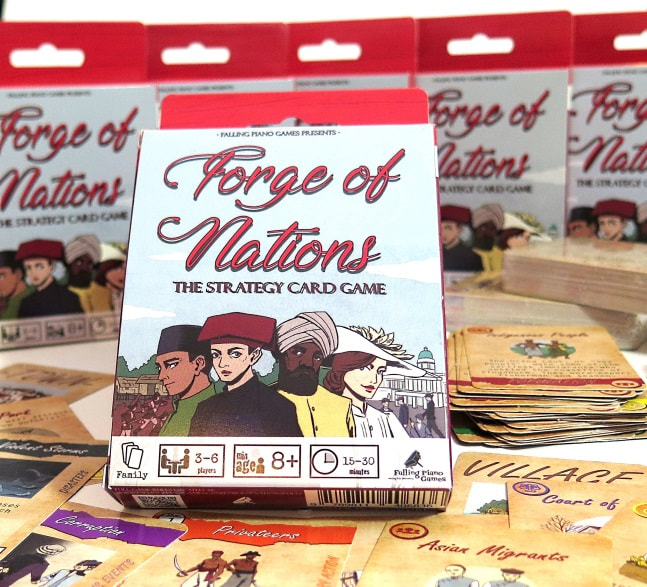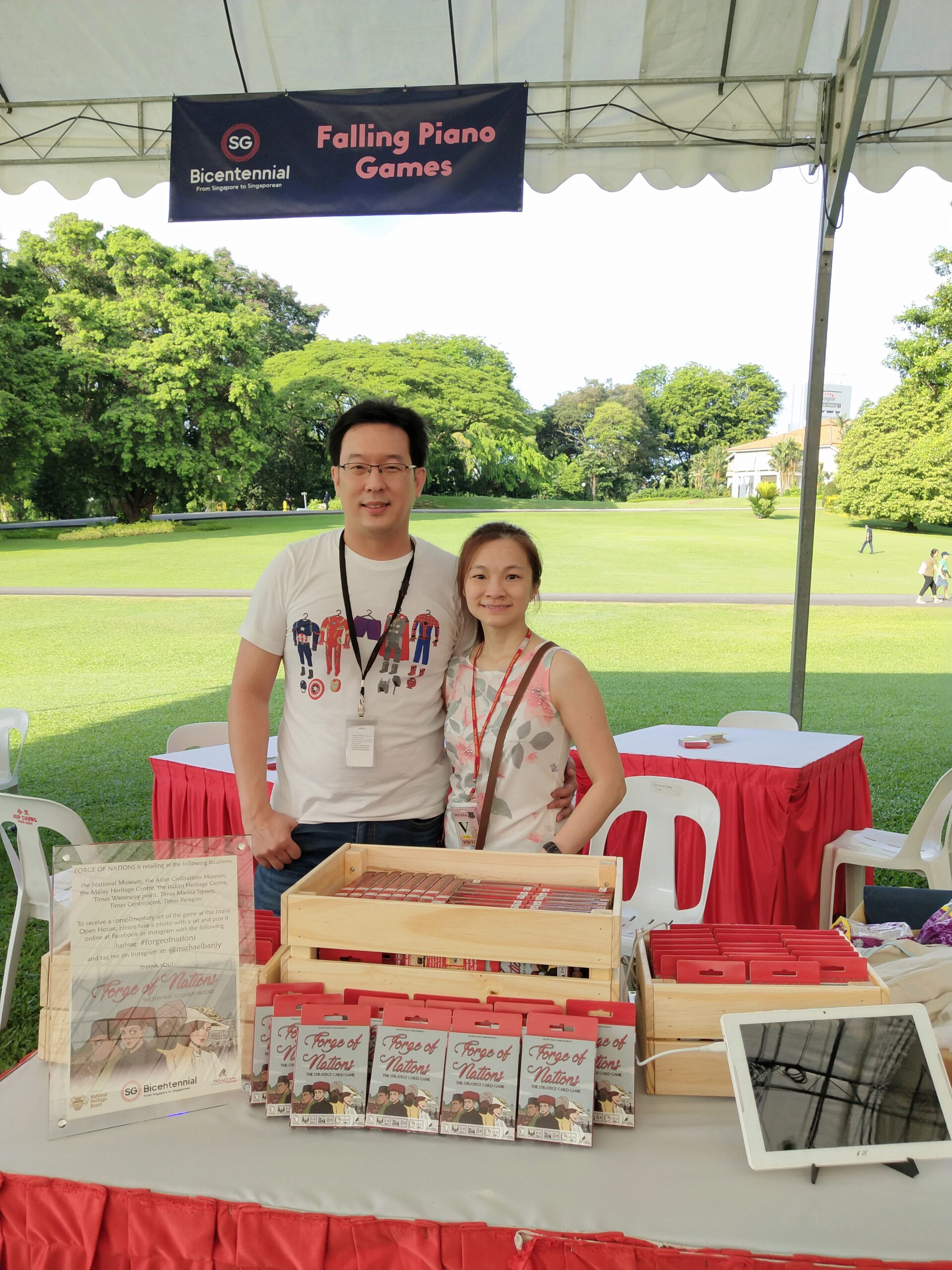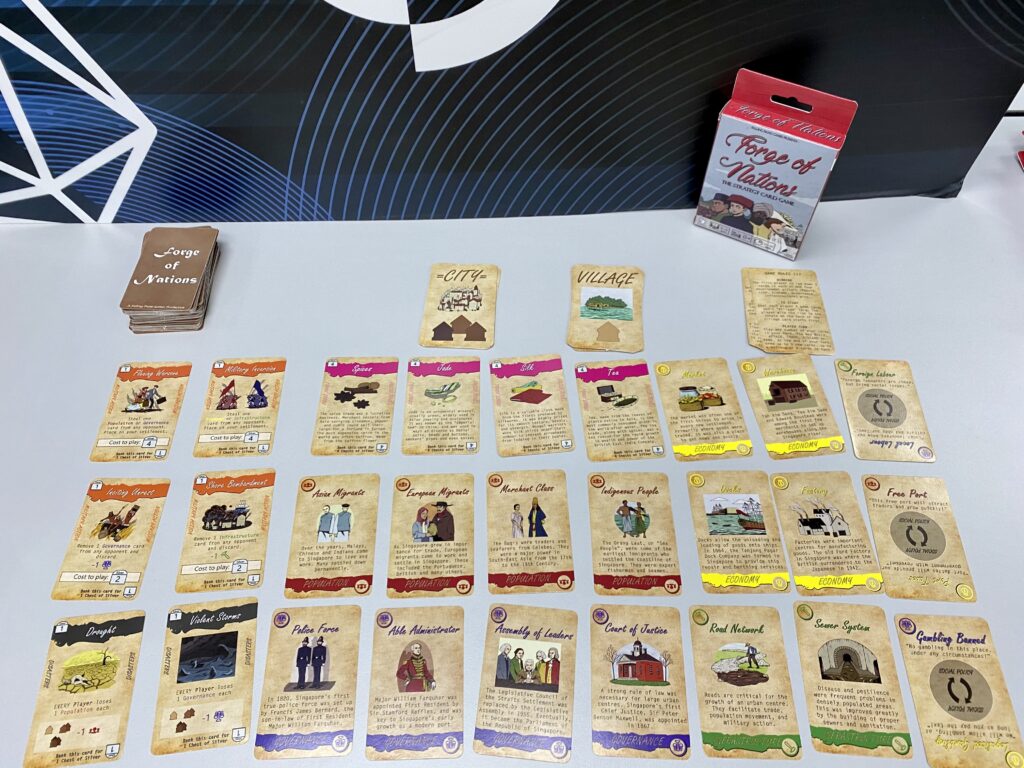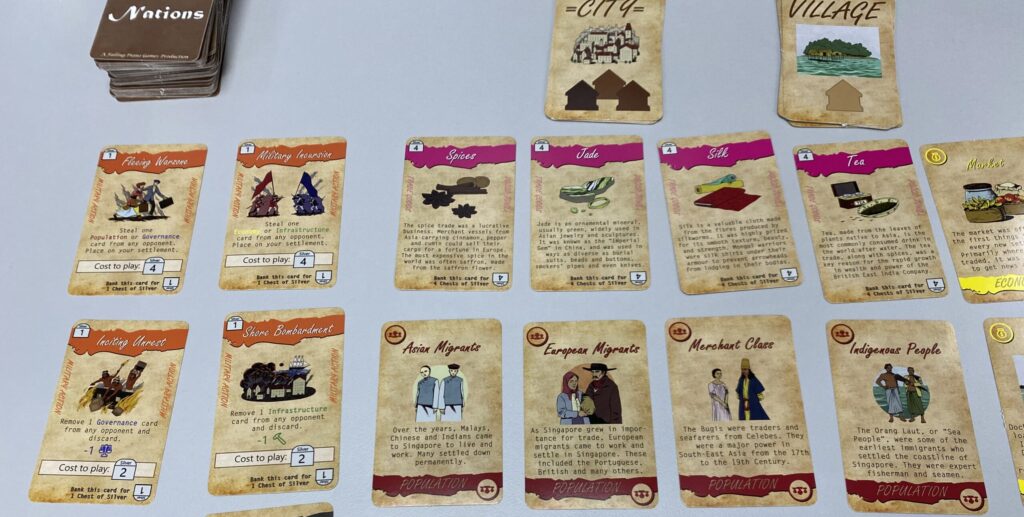Hey PI-fans,
How’s your day going? In today’s Support Local feature, we’re shining the spotlight on the creator of Forge of Nations, Wan Jun Yan! (pictured left)
Jun Yan has designed a few games in the past for organisation training and education aid. Forge of Nations is his first commercial game!
Q: When did you get started playing tabletop games and at what point did you decide to make your own games?
I started playing in upper primary, as far as I can recall, and that’s also what got me started on making my own games. In Secondary 1, I was very into the NBA and in particular, the Los Angeles Lakers. I made a pencil and paper basketball franchise manager game and got a few of my friends to join me in it. And in Secondary 4, inspired by a friend’s copy of a commercial card game, Modern Naval Battles, I made my own army version of the game, Modern Land Battles, which proved very popular among my group of friends.
Q: You’re quite into military history and history in general, what inspired you to create a game for the Singapore Bicentennial last year?
After helping the Ministry of Defence make a Total Defence card game to be used in Secondary schools, I realised that games are a powerful way to bring people into a subject that they normally might not be interested in. As such, I thought it would be interesting to make a game set in Singapore’s earlier settlement days and have people learn a bit more about a time period which they might not ordinarily take an interest in.
Q: Forge of Nations is an educational game about nation building, what fascinating nuggets of information did you discover in your research for the game?
I learnt that on Fort Canning there actually was a settlement that pre-dated the arrival of the British, but vanished by the time the Europeans arrived. I was surprised to learn that Stamford Raffles actually did not set foot on Singapore for another three whole years after Singapore was founded, leaving the governance of the fledgling settlement to Farquhar instead. It was also interesting to learn about the contrasting styles of governance that Farquhar and Raffles had, and the controversy surrounding whether enough credit had been given to Farquhar for Singapore’s success as a modern port.
Q: What interesting observations did you make during playtesting? And you got to exhibit the game at the Instana Open House too!
Q: What takeaways have players said they’ve learnt after playing the game?
Many players have said that they never really thought about how many different elements go into building a modern city and nation. Usually people just think of population growth, but after playing the game, they realise that you also need strong laws and institutions, adequate public infrastructure, and a growing economic engine to create job opportunities for people. The social policy cards also put into stark view the balancing act that governments perform all the time, where all policies have pros and cons and can have great impact on society.
Q: You’ve made a bunch of games previously, what’s the best thing you like about making games?
I like watching people play and having fun. That’s the most satisfying feeling. One teacher told me some of her students stayed back in school the day they received their sets of Guardians of the City and played non-stop until the evening. At Gamestart one year, we were the last booth to close up among the tabletop games because people were queuing up right until the lights were almost turned off by the exhibition hall, just to try out Impregnable Fortress.
Q: Any plans for new games?
Not any new commercial games at the moment. I’ve just come off one commissioned project by a large organisation to make a game for their internal training and onboarding, and I’m currently in the middle of another. These organisations approached me specifically to design games for them, and that’s currently what I’m working on.
Thanks for your time, Jun Yan! You can check out his other games and projects on Falling Piano Games

Made in conjunction with the Singapore Bicentennial commemoration last year, Forge of Nations pits players against each other to take a village from Developing to First World! The first player to lay down 3 cards in each of the 4 development pillars wins!
Each player starts off as a village settlement. On your turn, play any number of cards: you can build, attack, trade, discard or bank a card. At the end of your turn, draw 3 new cards.
If you have at least 1 of each development pillar, your Village will evolve into a Town. And as you have 2 of each development pillar, you turn it into a City!
Are other players doing better than you? You can attack them with a Crisis, a Natural Disaster or Military Actions!
A fast paced, history themed game that teaches you and your friends about Singapore history!
For 3-6 Players , 15-30 Minutes Playing Time, Ages 8+
Check out the game at our store or pick this up at our Webstore!
What kind of articles do you want to see? Tell us on our Contact page! Stay tuned to our Website, Facebook and Instagram for more news and PI-happenings! Never miss an update! Subscribe to our Telegram Channel!






